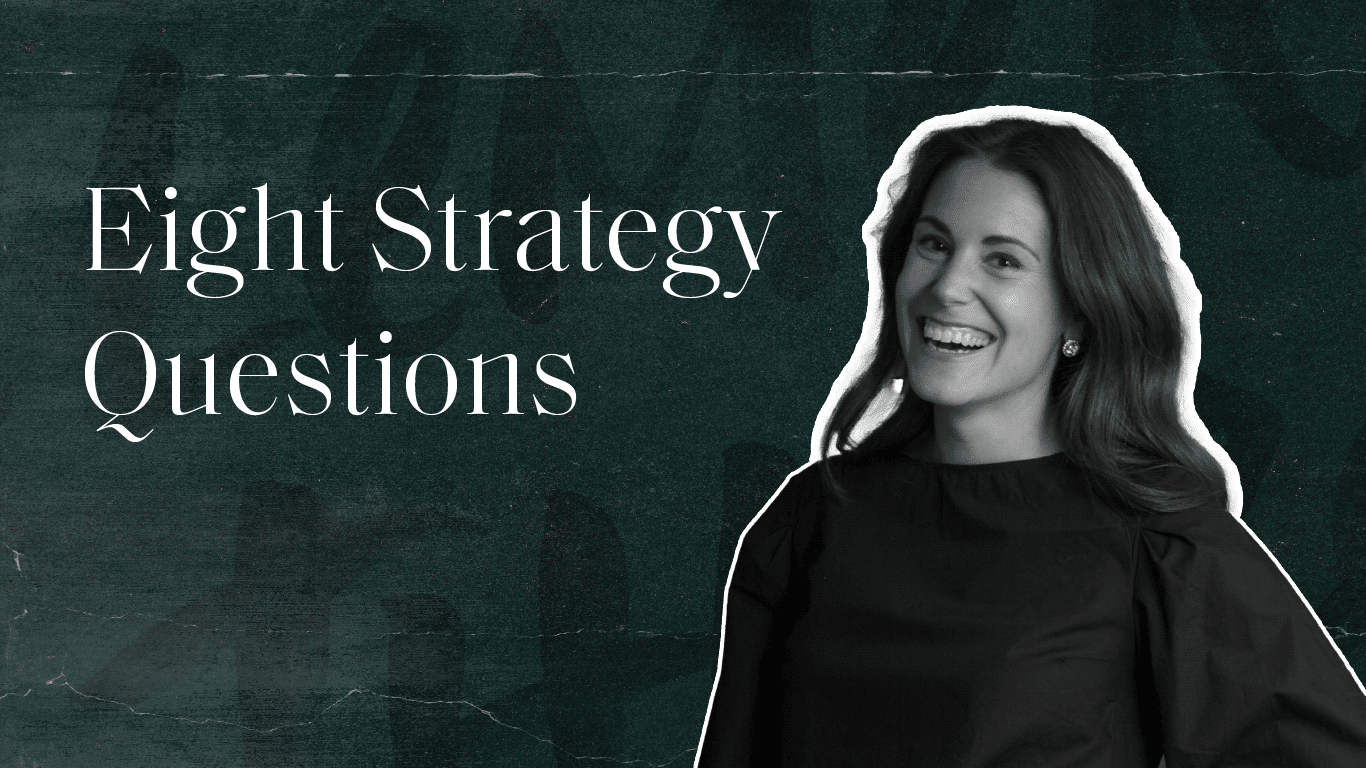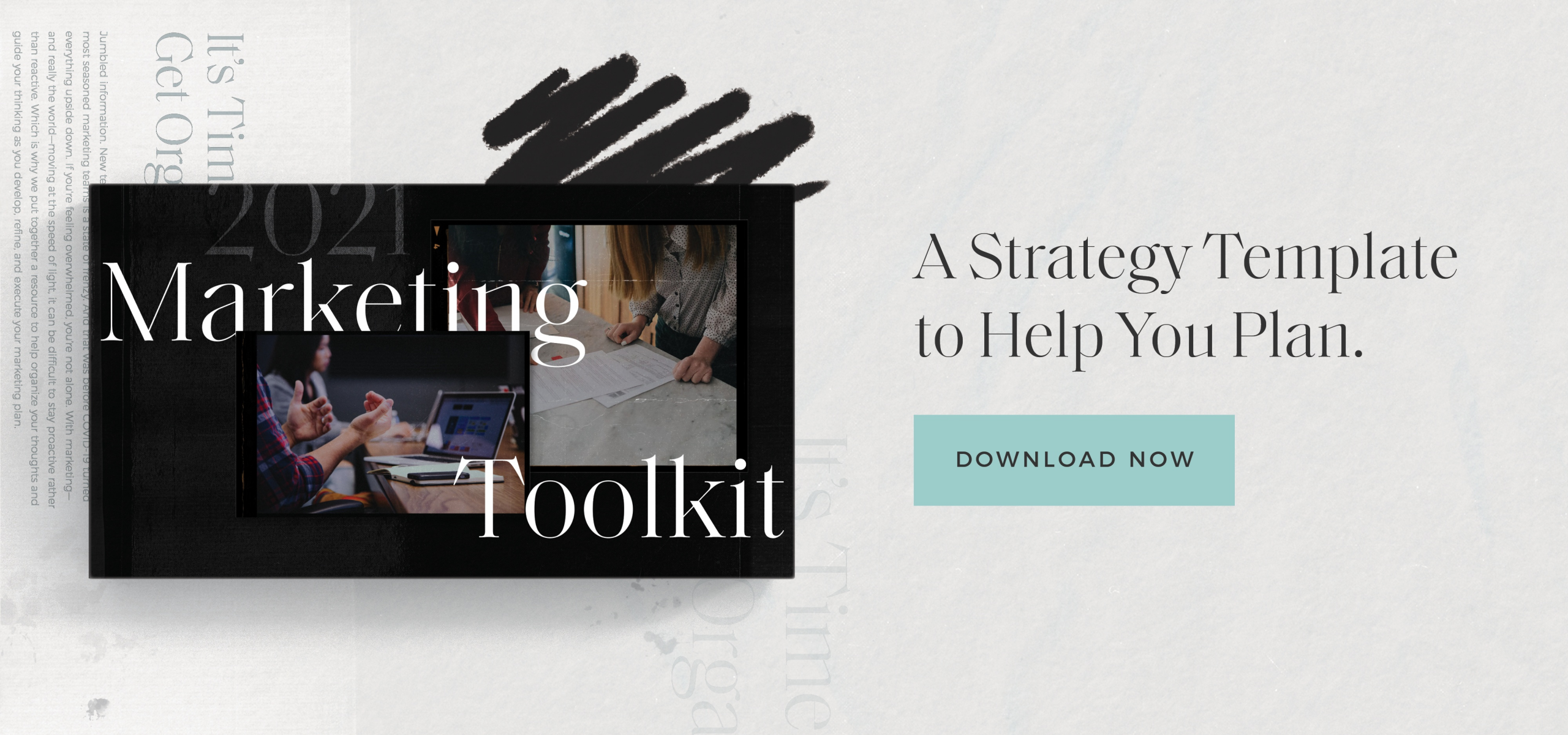Marketing generates value by attracting qualified leads that your sales team can convert into customers. There are about a million different parts of the marketing process, but at the end of the day, that’s what it’s all about.
Too often we get so bogged down in the tactics that we forget to create a framework to allow for smart decision-making and swift implementation once the strategy is defined. So how does a marketing professional or business owner go about putting together a marketing strategy?
Asking smart marketing strategy questions is the quickest route to smart answers. After all, if you don’t know what you don’t know, you can’t exactly get to the bottom of the problems you’re facing. So, before you start trying to assemble a plan from scratch, here are eight of the most relevant strategic marketing questions your team should be asking before settling on the particulars of your strategy.
1. What business objectives does the marketing strategy need to support?
Define the end game. Marketing moves businesses towards a different place than where they sit today. To a larger market, to serve more customers, to sell more products, to deliver additional services. If the business has not defined what they’re trying to sell and to whom, the marketing strategy has no chance of being successful.
Begin by clearly defining your business objectives in a quantifiable manner. Here are some examples of what that might look like:
- Increase revenue from $100M to $150M
- Maintain profit margin of 12%
- Complete 200 new installations of our software
2. What metrics determine success or failure?
Before you begin, ask yourself: how are we going to determine whether what we’ve done has been successful? Once you know, make sure you have the tools in place to actually report on that information.
For example, if success is defined by the number of new customers generated from your email marketing program, but you don’t have a CRM in place, there’s no process for documenting the origin of a lead, and there’s no appetite for segmenting lists and creating content. You can’t measure success that way.
Before executing, determine the scorecard. You can’t measure progress if you haven’t defined what it looks like. While measuring the effectiveness of your marketing might be harder now than it’s been in a while, there are still a number of ways you can gather the data you need.
Invest in your measurement tools so you can be smart about your marketing strategy as you begin to implement it.
3. How much should I spend?
Business owners and marketers alike can become paralyzed by the search for the perfect number—and they end up spending nothing at all. Or, worse yet, they spend randomly and nothing is integrated enough to have any real impact.
The short answer is: spend what makes sense for your business. How do you figure that out?
- 10-15% of your overall budget should be spent on planning and measurement tools
- Include the cost of utilizing internal resources for things like content creation, list segmentation, and customer feedback—and budget for it accordingly.
- Figure out how much of your company’s current profits you can comfortably invest back in the business to support future growth. It makes no sense to go out of business trying to fund your marketing effort.
4. What marketing strategies and tactics have been used in the past?
Before you make any decisions about what you’re going to do next, it’s a good idea to take a look at what you’ve already done. If you have the time and the ability to do a full brand inventory and audit, that’s your best possible option. It will give you total visibility into everything that your business has done to date, showing you the big picture in terms of your marketing.
If you have performance data—for example, if you’re equipped with in-depth reporting dashboards—add that to the stew as well. You’ll be able to see not only what you’ve done, but what worked for you and what didn’t. Learn from your mistakes, and try to replicate your successes as best you can. The more information you can synthesize before you start making new decisions, the better informed you’ll be and the smarter your decisions will be.
5. What does your competitive landscape look like?
We just got done saying that knowing what works and what doesn’t is an important piece of the puzzle when you’re building a new marketing strategy. It seems like common sense to say that if you’re going to devote time to examining your own past marketing work, you should do the same with the businesses you’re competing with for sales and attention.
Take some time to identify your competitors in the space you’re selling in. This might include local as well as national businesses, depending on your industry. But you need to know how the others who do what you do are representing themselves in your space.
Not only that, but you’re probably competing against businesses—and other factors—that might not occur to you without doing a little research. You’re competing against the ever-shorter attention span of your audience. You’re competing against businesses that exist at the fringes of your space, the ones that aren’t offering quite what you are but might have something that does the same job or makes your offering obsolete. Heck, in the digital space you’re even competing with businesses and products that have similar names to yours, whether they’re in your industry or not.
Once you know what you’re competing against, you’ll need to audit their marketing the same way you did with your own. Look at what they’re doing and how it compares with what you’ve done, and when possible also take a look at online engagement metrics for your competitors’ websites and digital content. See what’s working for them and what isn’t, just like you did with your own content.
6. What positioning and messaging will work for your audience?
Before you start producing content, you need to know who you’ll be talking to and how you should talk to them. That doesn’t mean guesswork or assumptions—it means doing the research legwork to identify your audience and determine what messaging and positioning will be most effective for them.
One way to do this is to examine the data you are hopefully already collecting from your website. You can learn a lot about who you’re selling to based on looking at who’s searching for you and visiting your website, and by examining what they’re doing once they arrive. Build customer personas based on that and any other market research you have access to or have done yourself.
Once you have that information, it should be pretty clear what needs to be said and to whom. It is critical, though, that however you curate your content in order to appeal to your audience, it’s still you. It needs to match your brand and your organization’s voice, and it needs to be true to who you are. If you’re struggling at that, maybe you should evaluate how healthy your brand really is—or even re-examine who you and your organization really are.
7. Who is available to assist in implementing?
Take an inventory of people inside and outside your organization who can assist with implementing your plan. Allow your resource availability to guide your strategic marketing plan. There is no sense in creating a strategy you don’t have the financial or human capital to execute on.
Get creative. Outside of company staff, think about bringing in the expertise of industry thought leaders, key partners, vendors, clients, and interns. How can you leverage all of these individual contributions to support mutual goals?
The primary reason great ideas and strategic plans go unexecuted is because nobody thought through who was going to do the work. Don’t let that doom your marketing.
8. Who is going to make the decisions once we begin implementation?
Marketing is as much about momentum as it is about consistent execution. If there is not a clear decision-making process set up in advance of the “creating stuff” part of marketing, your best work and greatest ideas will get caught up in an internal mess of non-responsiveness and last-minute ideas and opinions. Make one trusted person centrally responsible for approving all creative and content. The more complex this process is, the harder it is to build a successful strategic marketing effort.
Your strategy is your foundation—build it right.
Tactics alone won’t take you where you want to go. Creating your overall marketing strategy is one of the most important jobs you’ll do as a marketer—and if you don’t answer these eight marketing plan questions before getting started, your foundation is likely to be faulty.
Happy planning.






